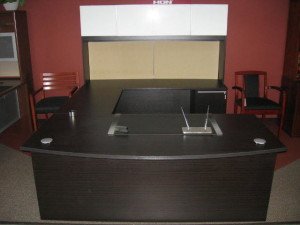 While economic conditions are looking up in the UK, many companies are still keeping tight control of their purse strings. This means that when bosses are on the lookout for new reception furniture, they may be particularly eager to ensure they make only the savviest purchases.
While economic conditions are looking up in the UK, many companies are still keeping tight control of their purse strings. This means that when bosses are on the lookout for new reception furniture, they may be particularly eager to ensure they make only the savviest purchases.
Luckily for managers, there is a wealth of advice available to help ensure they make the right choices.
Desks that look great and serve their purpose
Desks form the focal point of reception areas. They are the point of contact between visitors and companies, and it is therefore vital that they look the part. There are plenty of superb designs for firms to choose from, and they should try to go for versions that suit their general ethos and style. For example, if businesses are trying to emphasise their modern, contemporary nature, desks with curved edges may be ideal. On the other hand, if they are keen to convey a more traditional look, straight-edged desks might be better.
However, it is not only appearances that managers must think about. Practicality is key too. There is no point in purchasing desks that look fantastic if they don’t meet the needs of the workers who will use them. For example, bosses need to consider how many staff members will man their reception areas at any one time and they must take storage into account too.
Another issue for businesses to consider is proportion. A small desk can appear dwarfed in a large reception area, while a big desk can look clumsy in a smaller space.
Take a seat
Seating is another major issue. Most reception areas require at least some seating for visitors to use while they are waiting. Again, care should be taken to ensure that any chairs, stools or sofas purchased fit companies’ corporate styles. There are plenty of different products on offer, ranging from the conventional to the edgy. For example, attractive tub chairs or sofas can make a great choice in many reception areas.
When buying seating, companies must consider how much they will need. Too many chairs can give receptions a ‘waiting room feel’, while a lack of seating can come across as unprofessional during busy periods. The last thing firms need is to create a bad first impression on potential customers and other important visitors.
Attention to detail
As well as desks and seating, companies must consider those little added extras that can help to bring reception areas to life. For example, the inclusion of a stylish coffee table complete with a stack of up-to-date and relevant reading material can look fantastic. Meanwhile, plants and artwork can be a breath of fresh air in the spaces.
It can also pay off to include television screens in reception areas. These objects can be used to display programmes, important messages or adverts.
Although revamping reception areas and ensuring they are equipped with the relevant furniture and accessories does require some investment on the part of companies, this can prove to be money well spent.
Anna Longdin writes regularly on the subject of office design and she visits sites including Furniture Realm Direct to help ensure she stays up to date on all the latest industry news and developments.
